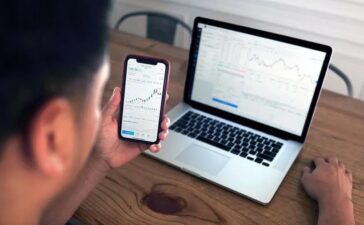In the fast-paced world of financial markets, traders are constantly seeking an edge to enhance their decision-making. One indispensable tool in a trader’s toolkit is backtesting. In this comprehensive exploration, we will delve into the intricacies of backtesting – a process that involves learning from historical data to refine and optimise trading strategies.
Understanding Backtesting
Backtesting is not merely a historical analysis; it is a forward-looking strategy development tool. Its primary purpose is to evaluate the viability of a trading strategy using historical market data. Traders can assess how a strategy would have performed in the past, providing valuable insights into potential future performance. The benefits include risk assessment, strategy refinement, and enhanced confidence in execution.
To evaluate the effectiveness of a trading strategy, various metrics come into play. The Sharpe ratio measures risk-adjusted returns, the maximum drawdown assesses the strategy’s largest peak-to-trough decline, and the profit factor gauges the profitability of trades. Understanding and interpreting these metrics are essential for a comprehensive backtesting analysis.
Setting Up for Backtesting
The foundation of effective backtesting lies in the quality and accuracy of historical data. Traders must choose reliable sources that provide comprehensive market data. This ensures a robust testing environment and accurate assessment of the strategy’s performance.
Selecting an appropriate time frame for backtesting is a critical decision. The chosen time frame should align with the trading strategy’s nature and objectives. Whether testing short-term intraday strategies or long-term positional trades, the time frame significantly impacts the accuracy of results.
Implementing Backtesting Strategies
Traders face the choice between manual and automated backtesting. Manual testing involves scrutinising historical data and executing trades manually, while automated testing leverages software to simulate trades. Each method has its advantages and disadvantages, and the choice depends on the complexity of the strategy and personal preferences.
A plethora of backtesting software options is available, ranging from free online tools to sophisticated paid platforms. Traders must consider factors such as ease of use, functionality, and compatibility with their trading strategies when choosing the right software.
Interpreting Backtesting Results
Once backtesting is complete, the focus shifts to analysing performance metrics. Metrics like the Sharpe ratio provide a quantitative assessment of risk-adjusted returns, while maximum drawdown helps understand the potential downside. A thorough understanding of these metrics is crucial for refining and optimising trading strategies.
Backtesting is not without its pitfalls. Traders must be wary of overfitting – a scenario where a strategy is tailored too closely to historical data, limiting its adaptability to future market conditions. Identifying and mitigating these pitfalls are vital for ensuring the robustness of a trading strategy.
Learning from Backtesting Mistakes
Examining real-world examples of backtesting mistakes offers invaluable insights. Learning from the experiences of others can help traders avoid common pitfalls and refine their approach to backtesting.
Markets evolve, and strategies must adapt. Backtesting is not a one-time exercise; it’s an iterative process. Traders should continuously adjust their strategies based on changing market conditions, incorporating lessons learned from backtesting experiences.
Backtesting Ethics and Compliance
Ethical considerations in backtesting involve ensuring transparency and integrity in data usage. Traders must use historical data ethically and avoid manipulative practices to portray a strategy more favourably than it actually performed.
Adherence to trading rules and regulations is paramount. Traders must ensure that their backtesting practices comply with legal and regulatory standards, promoting a fair and transparent trading environment.
Backtesting in Different Markets
Equities, Forex, Cryptocurrency, and Futures
Different markets present unique challenges in backtesting. Adapting backtesting methods to suit the characteristics of equities, forex, cryptocurrency, and futures markets is essential for accurate strategy assessment.
Future Trends in Backtesting
The integration of artificial intelligence (AI) is a growing trend in backtesting. AI-driven algorithms enhance the precision and efficiency of backtesting processes, opening new frontiers for traders seeking to leverage advanced technologies.
Machine learning plays a significant role in predictive modelling for trading strategies. As machine learning algorithms become more sophisticated, traders can harness these tools to refine and optimise their strategies with a focus on adaptability to changing market conditions.
Conclusion
In the dynamic world of trading, where markets evolve and strategies must adapt, backtesting stands as a beacon of insight. Learning from historical data is not just a practice; it’s a discipline. Traders who embrace the nuances of backtesting, interpret results wisely, and continuously refine their strategies are better equipped to navigate the complexities of financial markets successfully. Backtesting is not just about the past; it’s about learning, evolving, and making informed decisions in the ever-changing landscape of trading. Ready to start trading online? Explore the possibilities with a solid foundation in backtesting strategies.





